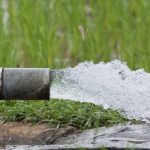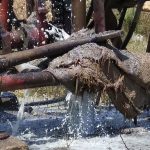A complete guide on how to successfully drill a borewell
Introduction
The location of the borewell is one of the key considerations before building on any site or planting any crop, as water is the primary source of all necessary supplies. We must take a few steps, each of which comes before the one before it.
Samy Borewell is a leading company in Chennai that provides all borewell services.
Borewell point identification
The first step in building a borewell is choosing the location of the well. Many different names know this step, including “borewell point marking,” “borewell point identification,” “borewell point selection,” “borewell point detection,” “water dowsing,” “water witching,” “hydro-geologist survey,” “geologist survey,” “scientific survey,” “coconut borewell point marking,” and many others.
However, there are two main techniques for identifying borewell points: pseudoscientific and scientific.
Scientific borewell point
Professional geologists or geoscientists typically carry out scientific borewell point identifications.
Types of scientific borewell point
- Vertical Electrical Sounding
- Very low-frequency sounding
- Ground penetrating RADAR survey
- Electromagnetic induction survey
- Induced polarization survey
- Satellite mapping
- 2D & 3D analysis
- Brunton Survey
- Gravity sensing method
- Proton magnetometer groundwater prospecting
- Electro sesmic method
The geoscientist will determine the fees and type of survey based on the local geology; the cost varies depending on how much technology is used.
Our skilled prospecting professionals have chosen some of the best techniques for scientific bore well point detection that can economically benefit the client and result in high field selection accuracy.
Looking for borewell drilling services in Chennai,
Pseudoscientific method
Detecting a station based on ancient practices and beliefs without any relationship or evidence of science is called pseudoscientific borewell point exploration. But there are chances of both success and failure in pseudoscientific surveys.
L-Rod Water dowsing method
The electromagnetic force in the earth automatically tends the copper rods used as a medium between the water-divining professional’s body and the earth’s latitude when a water diviner or dowsing expert walks on the soil’s surface.
- The person performing water dowsing holds the L-shaped rods tightly and upright.
- The water diviner begins to circle the field in different directions.
- A water diviner can detect the copper rods’ fluctuation as they cross the target.
- Depending on the fluctuation, the targets are cross-checked on two, three, or four axes.
- The conclusions are reported, and the points are marked after a continuous cross-check of the target.
Coconut dowsing method
The coconut dowsing technique is one of the most effective and traditional ways to locate underground water for borewell drilling or digging a water well.
- The coconut dowsing expert strolls through the landscape while holding a coconut.
- The coconut stands up when the person performing the coconut dowsing approaches the target..
- When you shake the coconut, the water returns to the head position.
- In the survey’s reverse direction, the same procedure is used.
If the same fluctuation persists over several measurements at the same location, the target is finally marked for choosing the borewell point.
Pendulum water dowsing
Most water dowsers work in rural or suburban areas where locals still determine where to find the best and cheapest groundwater supply. Homeowners are understandably hesitant to take a chance on a dry hole and seek the counsel of the water dowser because drilling and developing a well frequently cost more money.
- How the pendulum dowsing method operates.
- The pendulum is held by the water diviner, as depicted in the figure.
- Walking across the earth’s surface from one place to another causes the pendulum to rotate.
- The references are examined at different points, where each walk should come together at the same coordinates.
- The point for drilling a borewell has been decided based on where multiple axes intersect.
Borewell drilling
Borewell, also known as borehole drilling, is the method of drilling a shaft into the ground to a specific depth to access the groundwater supply for drinking or other purposes depending on the water’s quality.
The service adoption depends on the location of drilling, the required drilling depth, the type of geological formation in the area, and cost-effective strategies. There are two methods for borewell drilling: surface drilling and well drilling.
Surface drilling
When a drilling location is open and has enough room for the drilling rig to set the point, surface drilling techniques are used. Depending on how we will use the borewell, different diameters of drilling bits are used in surface drilling. According to the state of the market, high-power rigs are capable of drilling borewells up to 1500 feet.
Borewell camera scanning
One of the most crucial tools, borewell scanning, has discovered more than 80% of previously undetectable problems.
Equipment used for scanning
- High-definition camera (100% water resistance up to 500 meters)
- The waterproof cable of the required length
- Display unit
- Analog to digital converter
- Cable pulley
- Cable Bobbin
- LED lighting
Conclusion
Choose experienced borewell engineers who can quickly and affordably solve your drilling problems while understanding your borewell requirements.





